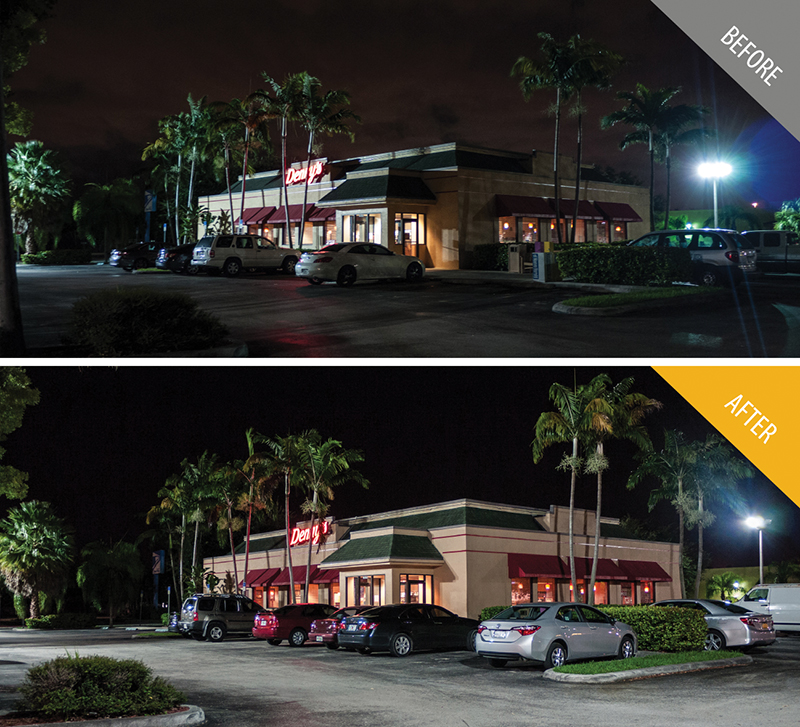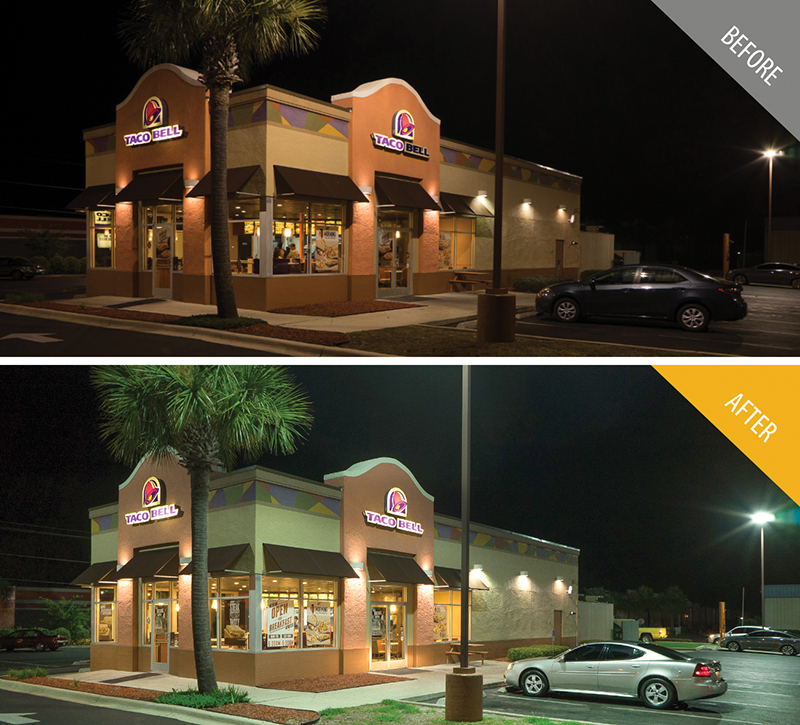How to cut costs amid skyrocketing energy rates and expensive LEDs.
By Daniel Gold
Face it. Despite claims by some power generation companies that we’re paying less for electricity than we did 10 years ago, energy costs will rise. And likely will continue rising in the future.
“U.S. electricity prices may be going up for good.” – Los Angeles Times
“Electricity costs are rising at twice the rate of inflation.” – The Washington Post
“Electricity costs will increase by 51% in the next 20 years.” – Off The Grid News
In fact, projections by the U.S. Energy Information Administration in its Annual Energy Outlook 2016 indicate commercial end-users will see overall costs for energy rise from $178 billion in 2015 to $387 billion by 2040 — an average hike of 3.2% each year.
That’s not good news for retail and restaurant owners whose highest operating expense typically is energy-related. Food retailers, i.e., restaurants and supermarkets, will be particularly hard-hit. Refrigeration and cooling account for nearly half of their operating expenses, so they can consume three times as much electricity as non-food operations.
 Power customers can take steps to lower electrical costs. Optimizing HVAC systems to provide more efficient heating and cooling and permitting employees to work from home, reducing company expenses, are two options. Of course, not all energy-saving tips, such as working from home, are optimum solutions for retail and restaurant establishments.
Power customers can take steps to lower electrical costs. Optimizing HVAC systems to provide more efficient heating and cooling and permitting employees to work from home, reducing company expenses, are two options. Of course, not all energy-saving tips, such as working from home, are optimum solutions for retail and restaurant establishments.
However, an area where they can make significant savings is with exterior lighting. As CEO of a lighting business, it’s an area I know a lot about.
The typical stand-alone retailer — especially quick-service restaurants — run lights 16 to 20 hours a day, which may include exterior lighting a good percentage of that time. Why? Many retailers, restaurateurs and consumers believe brighter is better — especially for stand-alone operations. To them, brighter means safer.
Despite improvements in low-light security camera systems, more trust still exists in well-lit places versus those that are darker. Businesses could dim exterior lights, but they face the loss of customers on two fronts: (1) they’re less visible, so potential customers may pass them by; and (2) they may be perceived as “less safe.”
Most retail and restaurant owners acknowledge the benefits of converting to energy-efficient lighting, but can’t get past the high cost of changing to a new system. If their old lights do even a merely adequate job, they see no reason to spend tens of thousands of dollars to hundreds of thousands to install and still have to maintain new lights.
But, what if there was a way to get new, brighter, better lighting and save money on energy spending while removing the repair and maintenance costs and responsibilities from the end-user for the life of the contract? Through this approach, a business owner could reallocate funds that otherwise would have been spent running old, energy-inefficient lighting. Would that be an incentive to switch?
Sound too good to be true? It’s not; however, there are options to be weighed.
When considering energy-efficient lighting upgrades, most people automatically think LED bulbs. LEDs often are positioned as the “best bet” for energy-efficient lighting and what most lighting companies recommend. LEDs are “sexy” products for lighting vendors that also happen to offer great profit margins.
But, there’s a “dark” side to LEDs. The American Medical Association has weighed in on the lights, issuing a warning that LEDs can be harmful to our health. The AMA reports there are two fundamental problems with “white” LED lights being installed nationwide.
 The first has to with its effect on the circadian rhythm of a great many people. It’s estimated that — given the same light output — white LED light is five times more likely to suppress melatonin at night than the high pressure sodium lamps many businesses currently use. Melatonin suppression can lead to sleep disruption and/or deprivation, which negatively impacts health.
The first has to with its effect on the circadian rhythm of a great many people. It’s estimated that — given the same light output — white LED light is five times more likely to suppress melatonin at night than the high pressure sodium lamps many businesses currently use. Melatonin suppression can lead to sleep disruption and/or deprivation, which negatively impacts health.
The other issue addressed by the AMA relates to actual physical damage. LED light is very concentrated, potentially creating discomfort and producing severe glare that causes pupillary constriction. And, because the light scatters more in the human eye, in sufficient levels it can damage the retina, which may cause problems seeing clearly when driving or walking at night.
Still, many businesses are switching to LED lights.
Health issues aside, going all-out for LEDs just doesn’t make good business sense. Yes, they are energy-efficient, but LEDs also are expensive and costly to maintain. Plus, a Markets and Markets analysis released in October 2016 reported a number of low-quality LED products are delivering poor service performance.
If LEDs aren’t the answer, what is the best alternative? For many companies, the answer is induction lighting. They’re not actually “new” — they were introduced by Nikola Tesla around the time Thomas Edison was working to perfect incandescent bulbs. While the nation embraced incandescent lighting, due to standardization and low cost, induction lights fell by the wayside, because of their higher cost. However, induction lighting has been rediscovered and now is being called the “newest, greenest, most powerful lighting today.”
Induction lights are longer-lasting options that can provide efficient lighting for as long as 11 years, even when operated 24/7. And the light they give off is similar or, in some cases, better than that provided by LEDs. In fact, the U.S. Department of Energy has called induction lighting, “One of the best kept secrets in energy-efficient lighting” and “an old lighting technology made new again.”
With lighting one of the largest single expenses for retail operations and restaurants, and electric rate-hikes looming, a significant number of them are exploring options to mitigate their energy costs.
Typical energy expenses can be 6% of the operating costs for retailers and restaurants, which, on average, operate at a low margin environment…so a 15% reduction in energy consumption combined with a 100% reduction in maintenance costs can create a significant positive shift in margins.
There are good, solid lighting systems out there that can help businesses cut 15% to 30% off their energy bills. Some of them will achieve that with no upfront expenses.
That translates into more money in a business owner’s pocket, or cash that can be re-invested in their establishment.
All from a potentially cost-free switch to energy-efficient lights. Worth considering, don’t you think?
— Daniel Gold is chief executive officer of Future Energy Solutions, a Fort Lauderdale, Florida-based green technology company that provides energy-efficient lighting systems, plus maintenance, to a variety of business clients at no upfront costs to them. The company specializes in businesses operating inefficient high intensity discharge (HID), high pressure sodium (HPS) and fluorescent lighting systems. The author may be reached at [email protected].
